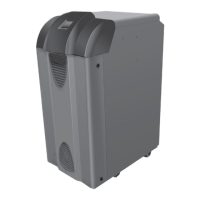9
4-a
4. CONNECT VENTING
IMPROPER VENTING may result in
property damage and the release of ue
gases which contain deadly carbon monoxide (CO)
into the home, which can cause severe personal
injury, death or substantial property damage.
Inspect existing chimney before installing
boiler. Failure to clean or replace
perforated pipe or tile lining will cause severe
injury or death.
The vent system shall be designed and
constructed in accordance with NFPA 54 and
applicable local codes to develop a positive ow
adequate to convey ue or vent gases to the
outdoors, while ensuring that ue gases do not
cool prematurely.
Observe all general venting guidelines provided in
Appendix B—Venting. Additionally:
1. This appliance shall be vented into a listed
gas vent, masonry, metal, or factory-
DAMPER MUST BE OPEN when the main burner is ring.
4-b
built chimney as required by NFPA 54
and applicable local codes for Category I
appliances. If venting this appliance into
a masonry chimney, the chimney must be
lined with a listed chimney lining system as
required by NFPA 54 and applicable local
codes.
2. Attach the vent damper with three
sheetmetal screws around the perimeter of
the ue collar (Figure 4-a), oriented so that
the position indicator is visible. The vent
damper may also be mounted anywhere
between the ue outlet and the chimney
within reach of the electrical harness.
3. Vent connector shall meet the requirements
of NFPA 54 and applicable local codes.
Using sheetmetal screws, attach the vent
connector between the vent damper and the
vertical chimney (Figure 4-b).

